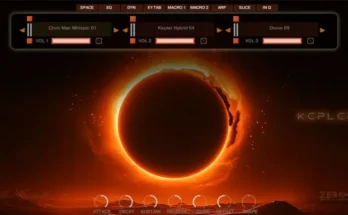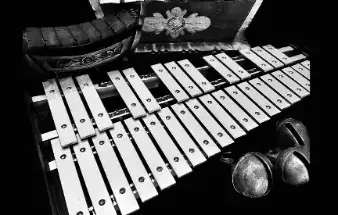17.01.2006 | TEAM SPiRiT | 4 DVD | 11.3 GB
The Emerald – Symphony Orchestra is a full symphonic compliment of instruments and articulations – features 20 GB and thousands of instruments. The Kirk Hunter Symphony Orchestra – Emerald is without a doubt the best “bang for the buck” orchestral sample library available today with its vast list of instruments and articulations, LegatoLive performance tools, use of alternates (K2 Round Robin), and flexible programming! These features, along with its incredibly low price, immense size of near 20 GB and thousands of instruments makes its value unsurpassed in the industry. But don’t let the low price make you think that you’re getting a “budget” product. This set truly rivals, and in many cases surpasses the quality of the best and most revered orchestral sample libraries out there. Symphony Orchestra – Emerald is the clear choice for your musical creativity!
Symphonic Strings
Emerald’s various parts can be bought separately — one of its principal components is the 3.4GB Symphonic Strings, featuring sections of 24 violins, 10 first violins, 10 second violins, 16 violas, 12 cellos and six double basses. Each section is presented individually and the 24 violins, violas and lower strings have also been blended together into some very useful unified six-octave ‘combination strings’ programs. You can see how Kirk Hunter mapped and blended the individual sections in the diagram on the opposite page.
With their dense timbre, concert hall acoustic and impassioned vibrato deliveries, the 24 violins sound similar to their counterparts in Virtuoso Strings. But if some samples seem familiar, there are plenty that are totally new. The trills and pizzicatos (which demonstrate the pleasant, natural-sounding reverb of the concert hall) are superior to those in the 1999 collection and a set of short spiccato notes work well for detaché deliveries. As in VS, there are short upwards slides of about a tone that give a tasty Bollywood flavour. The smaller violin sections’ more delicate and transparent timbre works better for quiet pads and lyrical ballads. I suspect that the first and second violins’ samples might be alternate takes from the same 10 players, but that’s not a problem: it means you can write unison notes for the two sections with no fear of sample duplication causing phasing issues, something that can’t be said for all orchestral libraries.
Sampled viola ensembles can sound a bit thin, but the 16-player section featured here have a lush, emotional sound across their three-octave range. Compared to the violas, the 12 cellos sound somewhat more astringent, but they still maintain a strong, rich sound. The six double basses are weighty and dramatic, and if their legato deliveries lack lyricism, they compensate with some tremendously powerful, energetic tremolos. Lurking in the deep end of the basses’ sample pool are the remnants of some old Virtuoso Strings samples which sound as if they’re played in octaves, not a desirable musical effect.
A versatile ‘velocity marcato’ style allows the strings’ sharpness of attack to be controlled by strength of touch, so you can punctuate quiet legato passages with emphatic marcato stabs. Symphonic Strings’ sections are great for composing and arranging, and their strong, slightly dark sound would be ideal for Bernard Hermann-style film soundtracks. All the samples and programs are duplicated in ‘Mute FX’ form, a cleverly EQ’d emulation of the shimmering sound of muted strings. The duplication of data accounts for 1.5GB of the library’s total size.
The One-man String Quartet
Emerald’s solo strings (all played in a studio location by Kirk Hunter) were originally released as a separate Virtuoso Series title some time ago and have been included as a bonus. I didn’t much care for the flat, toneless quality of the violin and viola’s no-vibrato samples, but their vibrato deliveries are more usable. The cello and double bass are played with feeling and the latter’s pizzicatos work fine for a jazz walking bass style. Unlooped and handicapped by one or two slightly out-of-tune notes, these aren’t the greatest solo strings in the world; however, their performances (which include slides, trills, tremolos and programmed ‘sfz’ deliveries) could prove invaluable if you’re working on a full orchestral score or mocking up a string-quartet arrangement.
The chamber strings — four violins, four violas, three cellos and two double basses — are more impressive. Kirk Hunter created the sections by overdubbing himself (thereby reducing the possibility of arguments amongst the players), an approach which has resulted in a rather pleasing ensemble sound. One interesting programming innovation produces an automatic 16th-note repeat (sync’d to Kontakt 2’s master tempo setting) on the short spiccato notes, a groovy rhythmic effect reminiscent of alternating up and down bows. All sections play nice lyrical vibrato sustains and the violins contribute some good upward and downward slides. Overall, the chamber strings sound strong, committed, expressive and full-toned. As with the solo strings, a little reverb helps soften the dry studio acoustic.
Unlike most string libraries, Emerald’s strings were not recorded at different dynamic levels; variation of expression is produced instead by different degrees of vibrato. The three vibrato styles employed are described as ‘no vibrato’, light vibrato and heavy vibrato. While ‘heavy vibrato’ is an accurate description, ‘no vibrato’ is misleading because (with the exception of the solo strings) some vibrato can clearly be heard. That’s OK by me, because strings played with absolutely no vibrato tend to sound rather harsh and unmusical.
Colourful Winds
The 6.3GB Woodwinds is an important and colourful part of Kirk Hunter’s symphony orchestra. The reverb die-away one hears occasionally suggests a large-hall recording, but close miking has ensured intimate contact with the listener. With the exception of alto flute and bass clarinet, the entire orchestral woodwind family is represented. All the instruments were recorded solo, then samples of the solo flute were layered to produce a virtual two-player flute ensemble. A clarinet ‘duo’ was created by the same method.
I really enjoyed playing these woodwinds. The instruments are well matched: in keeping with the classical tradition, all except the clarinet play with vibrato, and most have an option where the vibrato is introduced gradually. Unlooped but nicely played and tuned, all seven instruments are capable of delivering a melody with expression and feeling, and their staccatos are bright and incisive. One standout is the extraordinarily buzzy contrabassoon, which sounds like a 20-stone wasp trapped in an 40-litre bottle! If I had to criticise, I could point out that a few flute staccato notes need re-tuning and that the bright, four-dynamic clarinet sustains lack a truly soft-toned ‘pp’ layer, but that would be nitpicking; these are attractive woodwinds which will add lovely textures to arrangements.
In addition to sustains and staccatos, the woodwinds play trills, octave runs (most in major and minor scale versions) and fourths runs extracted from the latter; these are particularly effective on the piccolo. The flute’s ‘rips’ are fast pentatonic runs up to a target note, also presented in a trimmed three-note version. All good, lively stuff. The clarinet’s subtle played swells are useful, and while the programmed ‘sfz / mod wheel swell’ option provided for all instruments can sound a bit synthetic, it gives arrangers the chance to add dynamic mobility to their woodwind parts. On the downside, one programming forehead-slapper sees most of the clarinet and English horn ‘Legato Live’ keyswitch programs failing to load because they can’t locate a bunch of, er, oboe samples. There may be a rational explanation, but this kind of thing doesn’t exactly help your workflow!
[toggle title=”Home page”]https://tinyurl.com/sebdeew[/toggle]
http://alfalink.to/efef9cf5220a3fb931c5
Please REPORT in Comment Broken Links





